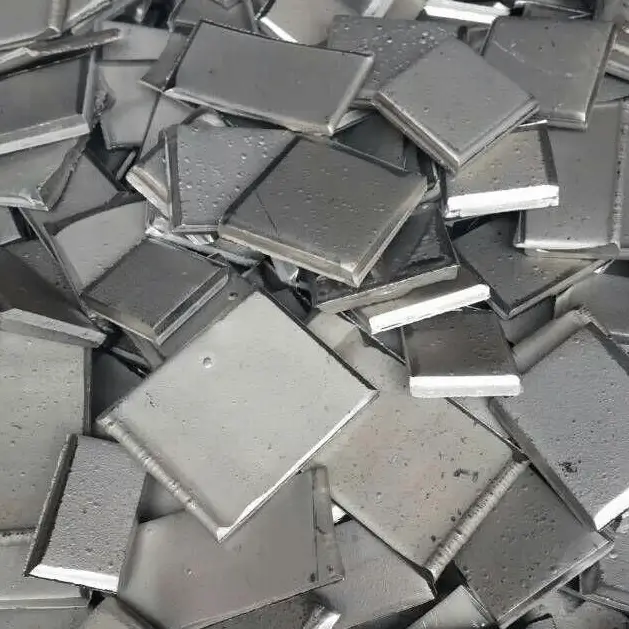Fancymetal offers high purity (customizable) metal products, as well as oxides, product shapes, foils, plates, wires, tubes, rods, powders and a variety of custom shapes.
We also have other cobalt products:
Cobalt Salts
Cobalt Oxides
Cobalt Powder
Cobalt is a metal element with hard and brittle texture. Its melting point is about 1500℃, boiling point is about 3100℃, relative density is 8.9g/cm3, Mohs hardness is 5-5.5. Cobalt has many characteristics. It can maintain high strength at high temperature, has low thermal conductivity and electrical conductivity, and strong ferromagnetism.
Physical properties:
The appearance of metallic cobalt is similar to that of pure iron or nickel, and its hardness is higher than that of iron. The hardness of electrolytically deposited cobalt is higher than that of metallic cobalt produced at high temperatures. When cobalt contains a small amount of carbon (up to 0.3%), it will increase the tensile strength and compressive strength of cobalt metal without affecting its hardness. Cobalt can be machined, but it is slightly brittle.
Preparation method:
The preparation of cobalt generally uses pyrometallurgy to enrich or convert cobalt in cobalt concentrate, arsenic cobalt concentrate, cobalt-containing nickel sulfide concentrate, copper cobalt ore, and cobalt sulfide concentrate into a soluble state, and then uses hydrometallurgy to make cobalt chloride solution or cobalt sulfate solution, and then uses chemical precipitation and extraction methods to further enrich and purify cobalt, and finally obtains cobalt compounds or metallic cobalt.
Application:
✔Manufacturing batteries
✔Preparing alloys
✔Cobalt is a metal that can maintain its magnetism for a long time after being magnetized. This superior magnetic property of cobalt makes it widely used in the manufacture of high-performance magnetic materials.
✔ Pigment production
✔ Cobalt also has many medical applications. The radioactive isotope cobalt-60 is used to treat human skin diseases and malignant tumors; the cobalt content in vitamin B12 (cobalamin) is as high as 4.5%; cobalt is used to make artificial hip and knee joints and dental fillings.
✔ Radioactive cobalt isotopes are also widely used in the irradiation of food processing, which can kill harmful bacteria.
Advantages:
✔ Strict quality control of raw materials, process control and pre-delivery processes.
✔ Strong technical capability makes it a reliable long-term supplier.
✔ Technical support: 24 hours technical support by email or phone.
History:
The chemistry and metallurgy of cobalt began around the middle of the 16th century, but cobalt pigments were used in pottery made by the Egyptians and Babylonians as early as 1450 BC. Cobalt salts can dye ceramic glazes blue, and mixed with nickel, chromium or manganese compounds can be mixed to produce all shades from blue to green.
In the Yuan Dynasty (13th century), China also knew how to use cobalt ore as a pigment to fire underglaze blue and white porcelain.
In 1735, Swedish chemist Brandt discovered the element cobalt.
In 1780, Swedish chemist Bergman studied the properties of cobalt in detail.
In the mid-19th century, work began to appear on electroplating cobalt on metals.
In the early 20th century, work on applying cobalt to alloy steel and other alloys emerged.
In 1917, Honda announced the discovery of a permanent magnet alloy containing cobalt.
In 1935, permanent magnet alloys were further developed, and a series of aluminum-nickel-cobalt permanent magnet materials (containing Al, Ni, Fe, and Co) were derived. Later, a new type of samarium-cobalt permanent magnet alloy was synthesized. Cobalt has become an important strategic metal.

